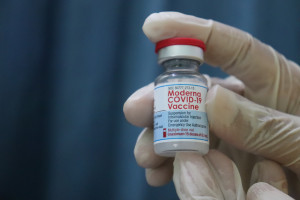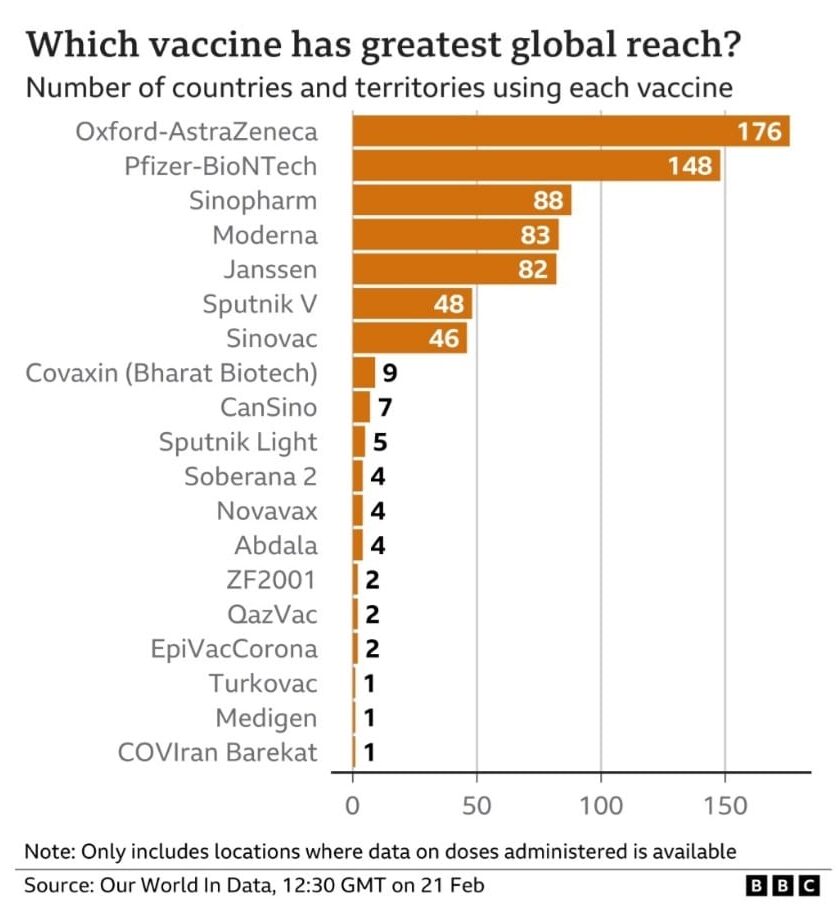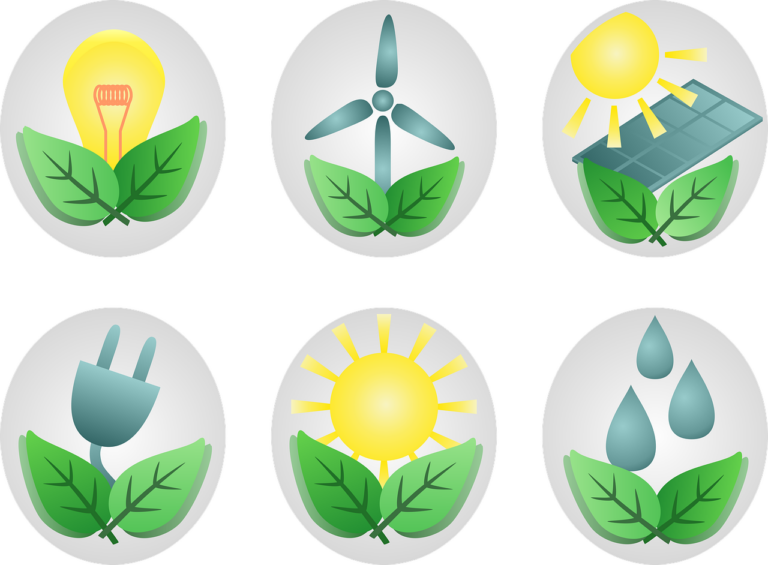
COVID-19 Notes
 By Dr Satish K Gupta*
By Dr Satish K Gupta*
Do you ever regret not having received Pfizer vaccine?
Which has been the best Corona vaccine?
There’s no “best vaccine” against corona. The World Health Organization has approved 10 corona vaccines so far to provide access to protection to citizens all around the globe. Any available approved vaccine is a promising vaccine. However, at the end of the day, the gross effects of the vaccination for different countries and regions nowhere match the efficacy data of various vaccines as declared in earlier controlled trials. Whatever the efficacy scores, the gold standard should be the number of lives saved and livelihoods resumed by early pandemic control. However, vaccine nationalism and pharmaceutical monetary interests had been masking the truth.
What should matter at this stage? How do these vaccines protect in the long term and help end the pandemic?
Though ending the pandemic is a global team effort, everyone needs to participate in it. Vaccines play an essential role in virus control, and their contribution is paramount.
The world can be divided into three parts based on the type of vaccines used:
1. Inactivated vaccines – Primarily Sinpharm, Coronavac: Most commonly used vaccines, more than 3.2 billion doses used in China till now.
2. Vector-based vaccine – Primarily Astra Zeneca, which is the most widely used vaccine globally with more than 1.55 billion doses used in India alone.
3. mRNA vaccines – Pfizer and Moderna. They are the most sought after vaccines primarily used in USA, Europe and part of the middle east.

1. Inactivated vaccines, namely Sinovac’s Coronavac and Sinopharm, have been used in maximum numbers in the world but mainly in China. China has already given more than 3.2 billion doses of these vaccines.
These vaccines showed low efficacy of 51-79% in early trials. However, they proved to provide excellent long term protection as manifested by blunting the Omicron wave in China. Though, there can also be other factors affecting the wave profile in the pandemic over different countries like exposure to the virus, population demographics, percentage vaccination coverage etc. But at the same time, it would also be unjustified to give zero credit to the type of vaccine used, especially when more than 2/3 of the eligible population has been vaccinated in different regions/countries being at the forefront of vaccination. This figure shows the profile of China, which speaks volumes about the way pandemic has been halted, lives saved, and the economy revived.
Scientifically also speaking, killed vaccines produce robust T cell responses giving the best long term protection. The way these vaccines blunted the Omicron wave, the fact seems to have been proven beyond doubt. Also, these vaccines stimulate antibody formation against multiple epitopes, giving them an edge over the spike protein-based vaccines, especially against newer variants. Rightly so, though, Coronavac showed very low efficacy in initial trials, but overall long, term results have been phenomenal with this most frequently used vaccine in China.
2. Vector-based vaccines: This vaccine had the maximum reach, approved by many countries. The number of doses used globally could be lesser than the competitor Pfizer vaccine.
Covishield is an Indian version of the AstraZeneca vaccine. In India alone, more than 1.55 billion doses have been used. It’s given in 2 doses, 8 to 12 weeks apart. The vaccine is approved by the WHO. The European version of the vaccine called Vaxzevira is approved by EMA also. However, neither Covishield nor Vaxzevira are FDA approved. It is noteworthy that the FDA approved a similar vector-based vaccine manufactured by US-based Johnson and Johnson, which showed even poorer efficacy (Vaccine Nationalism). Local health authorities in most countries around the globe accept the AstraZeneca vaccine.
The original efficacy studies showed that Covishield is 62% effective (Vaxzevira 76%) in preventing COVID-19. Studies during the Delta variant outbreak in India showed that the vaccine remained protective and prevented death in 91% of infected cases.
A recent study found that a 3rd booster dose with Covishield or an mRNA or Inactivated vaccine leads to an increased immune response against Omicron.
The vaccine uses a chimp adenovirus vector to carry the spike protein of Sars Cov-2 to produce an immune response. Vector-based vaccines produce a balanced immune response in the form of neutralizing antibodies and T cell responses.
The vaccine largely has successfully blunted the Omicron wave and pandemic in India. Damage has been much less than in many developed countries. The country has soon come out of pandemic, with life reverting to normal.
3. mRNA vaccines: Pfizer/BioNTech and Moderna – Both vaccines are fully approved by the FDA, WHO, EMA, and almost all international health authorities. Based on new technology to the vaccine market, mRNA vaccines. These vaccines are based on genetic mRNA molecules. The mRNA (messenger RNA) carries the genetic code for the “spike” protein, an antigen specific for the SARS-CoV-2.
Once injected, the mRNA enters body cells, making them produce the spike protein themselves. This allows the immune system to prepare to combat the actual infection if it happens.
Both have received worldwide acceptance and are generally rated the top COVID-19 vaccines available. They have generated the highest revenues for the companies—the most expensive vaccines in the world. They have been mainly used in the USA and Europe.
Initial trial data had shown excellent efficacy data to the tune of more than 95% for Pfizer and more than 93% for Moderna. But their efficacy did not last long. They have shown little protection against Omicron. As a result, both Europe and the US had a devastating Omicron wave.
Israel, where the Pfizer vaccine was primarily used, had a destructive Omicron wave despite being a pioneer in vaccination. Waning immunity following the Pfizer vaccine prompted scientists and Governments to advocate repeated boosters.
Unlike any other vaccine manufacturer, waning immunity forced Pfizer to go for Omicron specific vaccine to stay in the market. However, Pfizer’s Omicron specific vaccine is yet to be launched. Secondly, with the possibility of the continued repeated evolution of the Covid-19 virus, repeated tweaking of the vaccine would be a major concern. In all practicality, mRNA vaccines have been poor in providing long-lasting immunity and halting the pandemic.
Proponents of mRNA vaccines would flash T cell response data and hundreds of scientific publications in reputed journals to support their vaccines. But the virus does not get influenced by data; instead, it requires a robust immune response. Unfortunately, thousands of lives lost have been lost forever, families devastated, livelihoods lost for millions. Still, profit-hungry pharma giants continue to impress and influence the political minds with statistics and laboratory parameters.
Secondly, one may have noticed a trend of shifting the blame of the ferocious Omicron wave to the paucity of vaccination in these countries/regions. One would recollect US, Europe and Israel (all Pfizer vaccine consumers) started the vaccination campaigns earliest, reached the peak fastest and boasted the most about their speed and coverage. At the same time, their media mocked the rest of the world.
Let’s look at the vaccination trends so far
A close look at the data, one can find that despite higher vaccination 165 doses per 100 persons vs 136 doses per 100 persons in India, the US had a much larger number of cases and deaths.
Regions with good vaccination rates may be compared. However, it may not be feasible to compare the statistics of very poorly vaccinated countries.
Several other factors may be responsible for pandemic control and viral spread, but vaccines remain the prime tool; hence, the long-term results should be looked upon, rising above the geographical boundaries to choose the best vaccine for the future.
mRNA vaccines may be suitable for initial humoral antibody response but have proven poor in providing long-lasting immunity in the form of T cell responses. However, inactivated vaccines remain an excellent choice for long term protection. In such a scenario, a mix match strategy is likely to work best for the protection of mankind.
Please note that the efficacy rates may differ between the vaccines. Nevertheless, all of the approved vaccines are protective and safe. Any vaccine will help halt the pandemic to some extent and protect from unfavourable outcomes, regardless of the numbers.
Every person should contribute to breaking the chain of infection and prevent new variants from arising. Only then the world can become a safer place.
Also read: The Omicron Wave: Why Hong Kong’s strategy failed?
*Dr. Satish K Gupta is an MD in Medicines, a Visiting Senior Consultant Physician and Internist at Max Super Speciality Hospital, and a Clinical Assistant Professor at GS Medical College, Chaudhary Charan Singh University, Meerut. He is the author of Journey of COVID in India: A Doctor’s Perspective.





